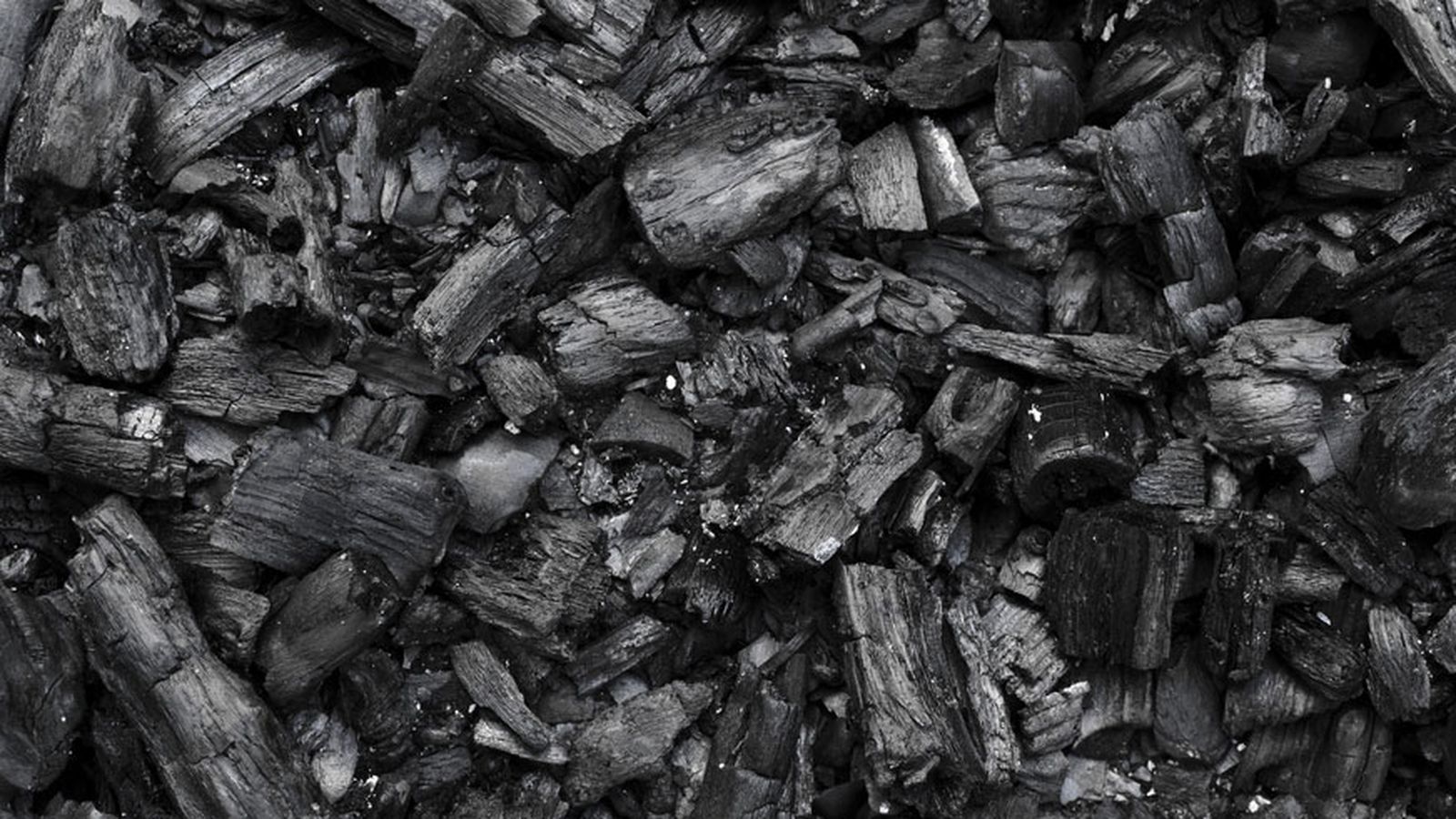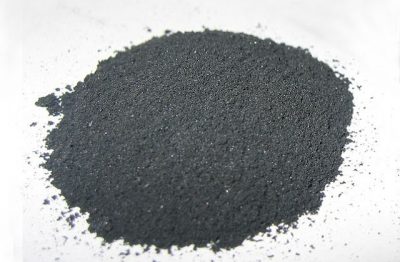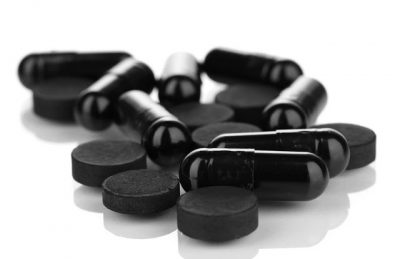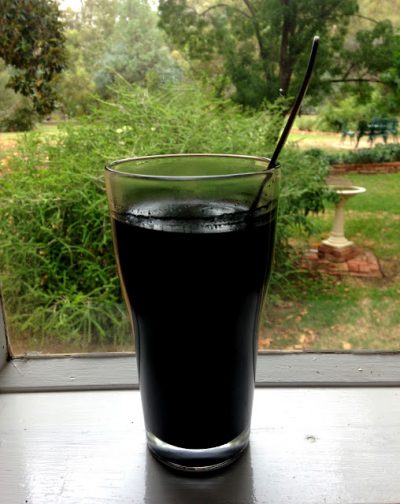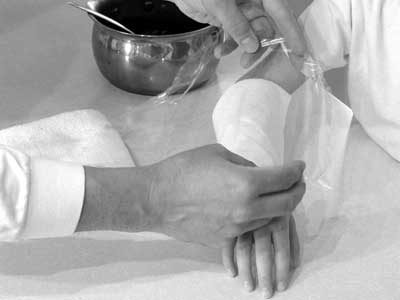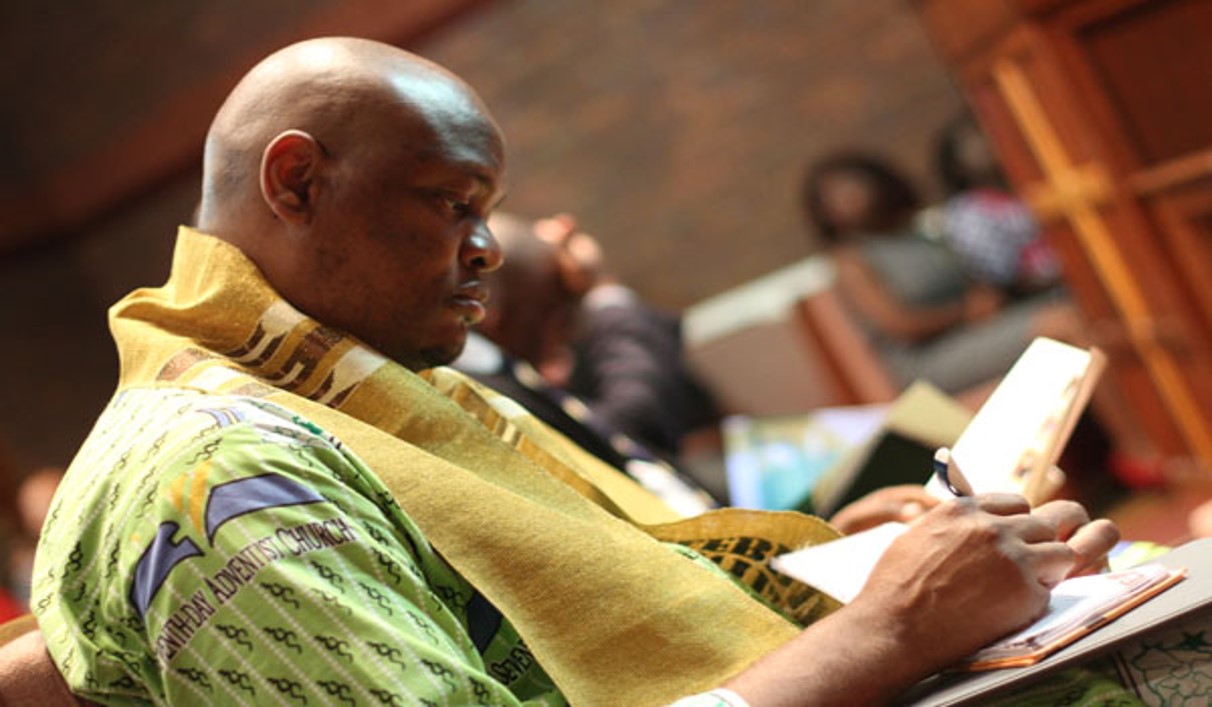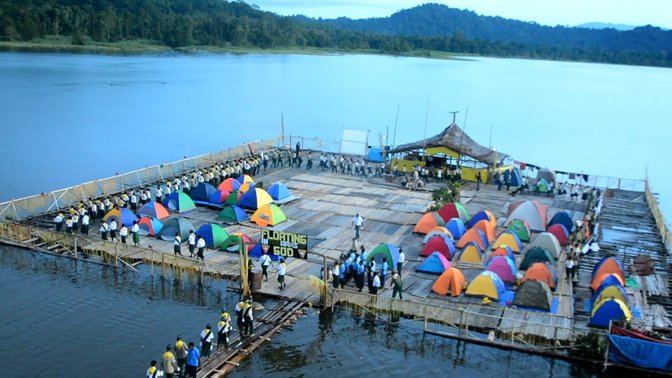
by Onovae Akpoesiri | Mar 8, 2018 | Food for thought
Sometimes we ignore the little things that can save our lives simply because they are cheap and easy to get. Today we will be looking at the wonders of charcoal.
My Favourite book says “God has chosen the foolish things of the world to put to shame the wise, and God has chosen the weak things of the world to put to shame the things which are mighty.” 1 Cor. 1:27 (NKJV)
What is charcoal?
According to Collins English Dictionary, charcoal is a black amorphous form of carbon made by heating wood or other organic matter in the absence of air: used as a fuel, in smelting metal ores, in explosives, and as an absorbent. Many people use charcoal to make fires, for cooking, and for heating up water.
How to get Activated Charcoal

Charcoal is very easy to get. First heat the wood, then break the charred wood into smaller sizes and then grind it into fine powder.[AdSense-A]
Can any wood be used?
For effectiveness, we recommend you get your activated charcoal from coconut shell or any other specific wood with ultra-fine grains.
How can I store my Activated Charcoal?
You don’t need any special device or container to store your charcoal powder, store it in a dry, tightly covered container; this will keep it fresh for a very long time.

Can I get Charcoal from a chemist or pharmacy?
If you cannot go through the stress of burning and grinding charcoal, you can get charcoal in small round tablets from a pharmacy or chemist, but look for the ones from coconut shell or any specific wood with ultra-fine grains and avoid the ones with sweetener.

Does it have taste?
Charcoal has no smell or taste. It is completely safe.
Can burnt food be used as charcoal?
The answer is NO, burned food is not charcoal. Burned food is very bad for the body and should be avoided.
Benefits of charcoal
- It is very easy to get or make
- Very cheap
- It is very simple to use (both inside and outside of the body)
- Very safe to use
- Works well for many diseases
Uses of charcoal
Charcoal can be used to help treat the inside of our body: Gas, Diarrhea, Vomiting, and even Poisoning
Outside the body: Infections or inflammation of the skin and joints, Eye and ear infections, Wounds from poisonous plants, Bee stings and other insect bites, Spider and snake bites

Dosage for simple ailments
- Gas
- Bloating
- Diarrhoea
- Vomiting
Adult: Mix 1 to 2 large spoonful of charcoal powder with a small amount of water.
Then fill the glass with more water and stir well.
Drink the mixture and then drink some clean water afterwards.
Repeat the charcoal dose after each loose or watery stool, and after each vomiting experience.
Children: one half of the amount that we would give a grown person.
If they have a lot of stooling and vomiting, you must give them other liquids like rice water or water with a little bit of sugar and take them to the health worker quickly.

Note: Charcoal can be taken any time it is needed but it is best taken between meals, like 2 hours after eating or drinking medicine.
Treating Poison
If someone has taken poison or taken too much medicine, the best thing to do is to quickly give that person some charcoal (within 30 minutes) and then take the person to the clinic.
Dosage for poisoning
Immediately drink 4 to 10 large spoonful of charcoal powder mixed with a small amount of water. (Take the larger amount if the person has eaten in the past 2 hours)
Then refill the same glass with water and drink it down.
Repeat the charcoal dosage in 10 minutes, and any time later if the person starts feeling worse.
Note: Do not give charcoal by mouth if the person is sleepy, unconscious, or may be unable to swallow. In such cases, take the person to the clinic or hospital immediately.
Important: Always keep charcoal powder ready to use at home
Using charcoal on the skin
Charcoal can be used as a bath or applied as a plaster.
Charcoal bath
Benefits
- To treat large areas of the body
- It is simple to prepare
- Useful for skin disease
Dosage
Add 2 cups of charcoal powder to a tub of water.
You can put the whole body in the charcoal water.[AdSense-A]
Charcoal plaster

Benefits
- For treating specific part of the body
- For treating poisonous bites
Dosage/Direction
- Mix charcoal powder and a little water and make a wet charcoal paste.
- Spread the paste on one half of a thin, folded clean piece of cloth. Then cover the paste with the other half of
- the cloth.
- Place the charcoal plaster on the affected body part— making sure it completely covers the area.
- Wrap the charcoal plaster with plastic—to keep it from drying out.

- Bandage or tape the plaster securely in place.
Note: Before applying a plaster we should wash the skin very well with soap and water.
- Then apply the charcoal plaster and leave it on for several hours or overnight.
- In the morning, remove and throw away the plaster.
- Prepare a new plaster and put it on the skin. You can continue this for several days or until all of the swelling is gone.
How to Treat Poisonous Bites
If someone has been bitten by a poisonous snake or spider, stung by a scorpion or many bees, they must be treated immediately.
Important: Always keep charcoal powder ready to use at home
Dosage/Direction
- Wash the area thoroughly with soap and water immediately.
- Apply a large charcoal plaster directly over the bitten area (or the entire area).
- Cover the plaster with plastic—to keep it moist.
- Change the charcoal plaster every 10 to 15 minutes—until the pain and swelling are gone.
Also, take charcoal by mouth
2 large spoonful of charcoal in 1/2 glass of water every 2 hours.
Do this 3 times.
Then take 1 small spoonful every 4 hours for the next day (24 hours).
Every time you take charcoal, you must drink 2 glasses of water.
Snake Bites
Note: Some snakes are very dangerous and can kill people. You must act fast when you treat snakebite. If the snakebite is poisonous, pain and swelling will come within 10 minutes. Charcoal works best when it is applied to the snakebite before much swelling comes.
Dosage/Direction
- With snakebites, remember to: Make the person stay very quiet and still.
- Send someone to get medical help quickly.
- Apply a large charcoal plaster as soon as possible, while you are waiting for medical help or while you are on your way to the clinic or hospital.
- Give 2 tablespoons of charcoal mixed with water, for the person to drink if he or she is not sleepy or unconscious.
- If available, put some ice on the wound, both above and below the charcoal plaster. If it becomes too painful remove the ice.
Do you know that a wise use of charcoal has saved many people with poisonous snakebites? Isn’t it wonderful that such a simple medicine from nature can help treat so many diseases, and save so many lives?
Note: they are other uses of charcoal-whiten of teeth, mold cleansing, water filtration etc.
When used properly, the simple remedies of nature are often more effective than many modern medicines. Get your charcoal now without delay
Like I said before “God has chosen the foolish things of the world to put to shame the wise, and God has chosen the weak things of the world to put to shame the things which are mighty.” 1 Cor. 1:27 (NKJV)
May God bless you with good health as you seek to make a wise use of the simple remedies He has provided.
Don’t forget to use the comment box for questions and testimonies.

by Onovae Akpoesiri | Mar 8, 2018 | Food for thought
“Alcohol is a very effective dissolving agent. It dissolves families, marriages, friendships, jobs, bank accounts, and neurons, but never problem.” Yet, the practice of social drinking has become such a widespread habit in society that the total abstainer almost finds himself in the position of a heretic!
With the lack of explicit scriptural restriction from alcohol, theologians have controversial positions toward this practice. The Seventh – day Adventist understanding of the Word of God emphasizes on pure abstinence from all toxic substances including alcohol for our “body are the temple of the Holy Spirit”(1Cor 3:16-17).
Promoting health ministry principles that will prevent alcoholism is of a great importance to the church. In the present paper, attention will be paid to necessary measures to discourage alcohol intake, and to recover alcoholic addicted ones. To arrive at this goal, lines will be allotted to highlighting alcohol in Scriptures, and its effects on individuals and society.
DEFINITION
Alcoholism, also known as alcohol use disorder (AUD), is a broad term for any drinking of alcohol that results in problems. It was previously divided into two types: alcohol abuse and alcohol dependence (Jill, 2014). In a medical context, alcoholism is said to exist when two or more of the following conditions is present: a person drinks large amounts over a long time period, has difficulty cutting down, acquiring and drinking alcohol takes up a great deal of time, alcohol is strongly desired, usage results in not fulfilling responsibilities, usage results in social problems, usage results in health problems, usage results in risky situations, withdrawal occurs when stopping, and alcohol tolerance has occurred with use. Risky situations include drinking and driving or having unsafe sex among others. Alcohol use can affect all parts of the body but particularly affects the brain, heart, liver, pancreas, and immune system. This can result in mental illness, Wernicke–Korsakoff syndrome, an irregular heart-beat, liver failure, and an increase in the risk of cancer, among other diseases.[AdSense-A]
Alcohol use disorder (which includes a level that’s sometimes called alcoholism) is a pattern of alcohol use that involves problems controlling your drinking, being preoccupied with alcohol, continuing to use alcohol even when it causes problems, having to drink more to get the same effect, or having withdrawal symptoms when you rapidly decrease or stop drinking.
The word alcohol is probably derived from the Arabic “al kohl” meaning a fine powder, probably antimony sulfide, used then in making cosmetics. In time it came to mean the essence of something. Still, much later, in the 16th century AD, an early chemist, Paracelsus, defined it as the most subtle part of anything” and in this sense spoke of it as “alcool-vini”. Gradually the “vini” was dropped but it was not until the 19th century that the term “alcohol” came to be used generally for wine-spirits”.
Now, in chemistry, the word alcohol denotes a branch of the hydro-carbon family. It is a group of liquids containing the elements carbon, hydrogen and oxygen. There are 59 varieties of alcohol, the most important for our consideration being ethyl alcohol, fruit or grain spirit. Alcoholic beverages contain ethyl alcohol only, of which the chemical formula is C2H5OH.
Pure alcohol is a colorless fluid: it boils at 173 F and freezes solid at 200 F below zero. Absolute alcohol, 99% ethyl alcohol, is used in scientific and laboratory procedures. methylated spirit is ethyl alcohol to which 5% of methyl alcohol has been added to make it unpalatable. Both ethyl and methyl alcohol are highly toxic. Ethyl alcohol taken in excess can cause acute alcoholic poisoning which may be fatal.
Alcoholic beverages fall into three main categories according to the manner of their manufacture and the percentage of alcohol in them.
1. The brewed beverages are made from grain such as barley, oats, and maize. They include ale, beer, porter and stout. They are made by the conversion of starch in the cereals into sugar by the action of enzymes and the subsequent fermentation of the sugar. The conversion of the starch is effected by malt, which is usually sprouted barley. The enzyme formed during the sprouting converts the starch into sugar and then yeast is added which converts some of the sugar into alcohol.
2. Wines are made from fruits, usually grapes, by the direct fermentation of the sugar in the fruit Juice.
3. Distilled spirits include whisky, gin, rum, brandy, vodka. They are produced by fractional distillation of wines or brewed beverages to concentrate the alcohol in the distillate.
The active agent in fermentation is yeast which is a microscopically small plant usually present in the air or in dust. It produces an enzyme which is capable of breaking down sugars and finally converting the sugars into alcohol and carbon dioxide.
PLACE OF ALCOHOLISM IN SCRIPTURES
The issue of alcohol is an old one. It can be traced from Old Testament time through New Testament. Some people use Bible to argue that alcohol intake has nothing wrong. Throughout the Bible, from Genesis to Revelation, references to wine and strong drink occur frequently, sometimes in terms of appreciation, sometimes of strong condemnation. Thus in Isaiah we read, “As the new wine is found in the cluster … destroy it not for a blessing is in it.” (Isaiah 65:8). But in an earlier chapter we find a solemn warning against it, “Woe unto them that rise up early in the morning, that they may follow strong drink; that tarry late into the night, till wine inflame them” (5:11). This leads to the question on Biblical support to temperance and abstinence from alcoholic beverages.
Alcohol in the Old Testament
The first mention in the Old Testament of alcoholic beverages occurs in Genesis 9:21where Noah planted a vineyard and drank of the wine and was drunk. The writer had offered his explanation, in an earlier chapter (Genesis 4:21, 22), of the origin of institutions and inventions. Here he returns to his theories of beginnings, and sees in the forsaking, by the Hebrews, of their former nomadic way of life for that of settlement and cultivation of the soil, the curse laid on Canaan, the son of Ham.
Other OT texts relating to alcohol include Numbers6:3; Judges 13:7; Jeremiah 32:1-10; Amos 2:11.
Alcohol in the New Testament
In the New Testament references to what are clearly intoxicating beverages occur for the most part in connection with those groups of people who had been brought into the Christian faith in Asia-Minor, Greece and Rome, at a time when morals were low and indulgence in alcoholic drinks excessive.
In the Gospels there are only two definite allusions to intoxicating beverage. The first is surely significant. It occurs in the opening chapter of the Gospel of St. Luke in the announcement made to Zacharias of the coming birth of the forerunner of the Messiah. “For he shall be great in the sight of the Lord, and he shall drink neither wine nor strong drink; and he shall be filled with the Holy Spirit.” (Luke 1:15).
The second reference is in the parable of the faithless servant, who begins to eat and to drink and be drunken” (Luke 7:33).
References in the Epistles to inebriety are numerous and explicit. St. Paul was the Apostle to the Gentiles and he was frequently confronted with excessive drinking even within the young Christian congregations where the converts were either Jews living in non-Jewish environments or Gentiles brought in from paganism with its bacchanalian feasts (e.g., 1 Corinthians 11:21).
True, there is no absolute prohibition given of the use of wine, but St. Paul had on a number of occasions to rebuke his listeners in no uncertain terms: “Let us walk becomingly . . . not in reveling and drunkenness” (Romans 13:13). Among the offenses which will exclude men from the Kingdom of God, he warns them, is drunkenness: “Make no mistake … no drunkards . . . will possess the kingdom of God” (1 Corinthians 6:10). Again he points out the right course to the Ephesians, “Do not give way to drunkenness and the dissipation that goes with it, but let the Holy Spirit fill you” (Ephesians 5:18). The Galatians, too, need the warning that those who indulge in “drinking bouts, orgies and the like”, will never inherit the kingdom of God (Galatians 5:20, 21).
PROBLEM OF ALCOHOLISM

by Onovae Akpoesiri | Mar 8, 2018 | Food for thought
How well do you know the bible? Can you say that you know up to 80 percent of Bible characters? Here are 10 riddles to test your knowledge of Bible characters. Score yourself after the test and remember no cheating.
Test Your Bible Knowledge with these 10 Riddles
- I don’t consider myself as a great person or a worrier, but I made history by killing a very powerful and great captain with the nail from my tent and a hammer. I became popular simply because he asked for water, I gave him milk. I used my left hand to hold the nail and my right hand to hold the hammer and I smote him. WHO AM I?
- I was a good person, I love to fellowship with God’s children. On one faithful day as the sermon was going on, I fell asleep and I fell from a third story building. Miraculously I was brought back to life by the preacher. WHO AM I?
- I was the finest among the men in my kingdom and I was the third son of a very popular king even though he hated me because I killed my brother. I tried to overthrow my father but i failed. WHO AM I?
- I am a man who loved God with all my heart. My son was the oldest man that ever lived but he is dead and am not. WHO AM I?
- My story is a sad one, I was a good man, a God fearing man. Something very bad happened to me when I tried to prevent the ark of God from falling. WHO AM I?
- I am a servant of a very popular man of God who refused to collect priceless gift from a man he healed. However, I had to run after the man and collected all the treasures, though my life was not the same after I collected the gifts. WHO AM I?
- I am daughter of Phanuel from the tribe of Asher, a “prophetess” who met the infant Jesus and his parents in the temple and recognized him as the Messiah. WHO AM I?
- I am a God fearing man who was selected by eleven great men of God to replace a man who betrayed his own master. WHO AM I?
- My son is a major prophet in the Bible, he wrote the book of Isaiah. WHO AM I?
- I am the third king to rule Israel and the tenth son of my father. WHO AM I?[AdSense-A]
ANSWERS TO THE 10 BIBLE RIDDLES
- Jael Judges 4:17-22; 5:6, 24-27
- Eutychus Acts 20:9
- Absalom 2 Samuel 3
- Enoch Genesis 5: 21, 22
- Uzzah 6: 3-7
- Gehazi 2 Kings 4, 5
- Anna Luke 2:36
- Matthias Act 1: 26
- Amoz Isaiah 1:1
- Solomon 1 Kings 1,2,3,4…
Did you score up to 10% 20% 50% 80% 100% ? Tell us your score by using the comment box

by Onovae Akpoesiri | Mar 8, 2018 | Adventist nigeria, news
This petition addressed to INEC, Presidency, senate, etc is just one of the attempts to make our position known to government on the issues of Sabbath exams, Sabbath elections, etc.
Your signing the online petition will only show the number of those who are concerned about the sanctity of the Sabbath and will want the government to do something about it. Yesterday, we made contact with our Union presidents through the president of ENUC and he gladly promised to contact others, so that together they can swing into action in this regard.
If you want to be part of securing our right to the sanctity of the Sabbath. Sign the petition and send it to all your Adventist contacts. Don’t neglect it, in democracy, number matters and number is power, therefore be part of this move to honor God and his Holy Sabbath. See and follow the link below.
God bless you as you join hands with others to demand our right to the sanctity of the Sabbath in Nigeria. With you it is possible!

by Onovae Akpoesiri | Feb 11, 2018 | world Church
Camporee in Papua New Guinea first to be held completely on water. In what is believed to be a world first for a Pathfinder camporee, the entire event was held on water.
A specially-constructed pontoon, afloat on the Sepik River in Papua New Guinea, was the site for the week-long camporee, held in December 2017. The 50m x 40m structure accommodated the 350 Pathfinders and staff, including 47 tents.
Fittingly, the theme of the camporee was “Floating in the arms of God”. Four Pathfinder clubs took part in the 22 water activities.
Patrick Maru, youth coordinator for the Amunti District, Sepik Mission, said planning for the event began three years ago. He wanted to make a change to the usual style of Pathfinder camping.
“The program was officially opened by our youth director, Pastor Missikaram Guguna, assisted by guest speaker Pastor Lessley Yamahune, stewardship director for the Sepik Mission, and escorted by the ‘crocodile man’, symbolizing the Sepik River people,” Mr Maru said.
Despite a positive start, the camporee suffered a serious setback early on the third day when a large thunderstorm struck.
“The rain started pouring heavily and the wind blew mightily, breaking down all our tents,” Mr Maru said. “Leaders were running here and there with their torches flashing, checking all the kids.”
“I was recalling the Bible story about Jesus and the storm and that gave peace. That cold rainy windy night, I cried to Him for help.”
The storm was so powerful that large bush ropes and bamboo posts holding the pontoon in position were broken, causing it to begin moving. Fortunately it remained intact and drifted about 300m before coming to rest in a bay. Later that morning two outboard canoes pushed the pontoon back to its original position.
“Pathfinders and leaders have seen the mighty hand of God during our one-week camp . . . and these Pathfinders will have a story to tell to their kids in the future,” Mr Maru said.
By the end of the week 47 Pathfinders had been baptised in a baptismal pool in the centre of the pontoon.
South Pacific Division youth director Dr Nick Kross said it was a unique event.
“It may well be the first time in the world that a Pathfinder camporee has been held on water,” he said.


